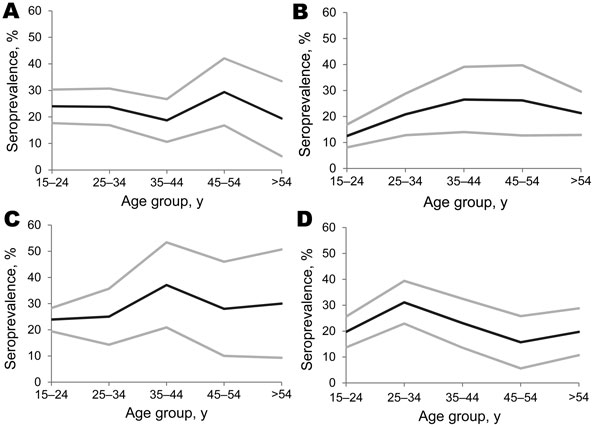Volume 18, Number 3—March 2012
Research
Seroprevalence of Antibodies against Taenia solium Cysticerci among Refugees Resettled in United States
Figure 2

Figure 2. Distribution of positive results from the classic enzyme-linked immunoelectrotransfer blot for lentil-lectin purified glycoprotein for antibodies against Taenia solium cysticerci by age category among US-bound refugees from A) Burma (Myanmar), p = 0.65; B) Laos (Hmong), p = 0.04; C) Burundi, p = 0.56; and D) Bhutan, p = 0.12. Black lines represent seroprevalence estimates across age categories; gray lines represent upper and lower bounds of the corresponding 95% CI. Two-sided p values were determined by using likelihood ratio χ2.
Page created: February 16, 2012
Page updated: April 25, 2012
Page reviewed: April 25, 2012
The conclusions, findings, and opinions expressed by authors contributing to this journal do not necessarily reflect the official position of the U.S. Department of Health and Human Services, the Public Health Service, the Centers for Disease Control and Prevention, or the authors' affiliated institutions. Use of trade names is for identification only and does not imply endorsement by any of the groups named above.